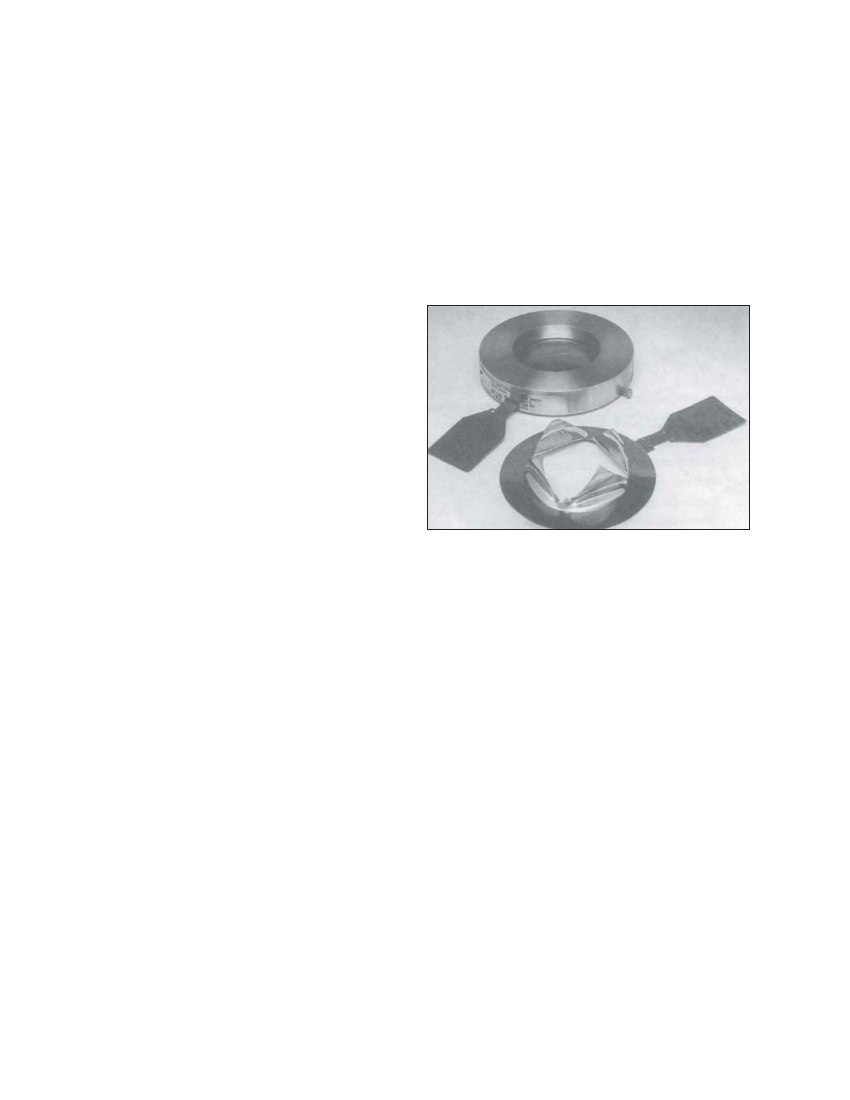
138 CIVIL WORKS GUIDELINES FOR MICRO-HYDROPOWER IN NEPAL
Hence, design improvements are required before this debeader
and can be used in the field.
Commercial debeaders are also available but they are
expensive. Some such commercial debeaders can also remove
beads after the joints have cooled (i.e. cold debeading).
Photograph 10.5 shows a section of an HDPE pipe which was
cold de-beaded using a commercial debeader. Further
information on commercial debeaders can be obtained
from:
Fusion Group PLC
Chesterfield Trading Estate,
Chesterfield S419PZ,
England,
UK Fax: +44(0)1246450472
Such discs are suitable for venting of both liquids and gases.
The disc is manufactured to burst within its tolerance only
when installed in a suitably designed and manufactured
holder. Some of the main advantages of graphite bursting
discs are that they are not adversely affected by misaligned
pipe work or overtorquing of pipe flange bolts. Due to the
sufficiently high burst pressure, this type of disc does not
require backpressure support to withstand full vacuum
pressure. The discs have an operating ratio of 90% and are
guaranteed to rupture within a maximum of 30 milliseconds.
The discs are also inexpensive and in case of rupture due to
surge pressure, all that is required to recommission the pipe
10.4 Bursting disc
As discussed in Chapter 6, penstock pipes for micro-hydro
schemes are designed to accommodate the surge head when
setting the pipe thickness. An increase in the pipe thickness
also increases the cost of the pipe. Furthermore, depending
on the location of the site, the transportation cost also
in-creases. In a high head scheme with a long penstock
alignment, the increase in cost to accommodate the surge
head can be significant.
There are many ways to guard against surge damage but
most involve significant cost (where, for safety reasons the
flow has to be constrained) or involve great care in installation
and maintenance.
The “bursting disc” technology may provide a reliable means
of safely releasing the excess head in case of surge pressure.
A “bursting disc” is a commercially available over-pressure
safety device made from a brittle material such as graphite or
an appropriate metal, or a suitable metal which is designed to
rupture extremely quickly once a critical pressure is exceeded,
such as the surge head induced inside the penstock pipe in
the event of a jet blockage. Such discs are commercially used
in the chemical industry to protect pipelines and pressure
vessels (that convey gas and petroleum fluids) from high surge
pressure. Pipes that have bursting discs do not need to be
designed to accommodate surge pressures. Photograph 10.6
shows a commercially available bursting disc (including the
burst plate). Note that scratch lines are made in the plate
during manufacture to introduce weaknesses in the plate
such that it bursts according to the pattern shown in
Photo-graph 10.6 once the prescribed pressure is reached.
Most graphite discs are flat, deform very slightly under a
pressure differential and because of their physical properties,
at the set pressure shear instantaneously around the periphery
of the disc active area giving immediately full bore venting.
Photo 10.6 A commercially available bursting disc
is to replace the graphite plate. Hence, this technology could
be highly suitable for micro-hydro schemes including those
located in remote areas. Theoretical research on the
applicability of bursting discs for micro-hydro schemes has
been undertaken by Dulas in conjunction with Warwick
University. The bursting disc arrangement proposed by the
study is shown below in Figure 10.2.
Note that in case of the rupture of the disc, the flow would
discharge inside the turbine casing. Such an arrangement is
well suited in micro-hydro schemes since a separate flow
control structure is not required.
The conclusions of the above study were as follows:
The disc could reduce surge pressure by 60% to 70% if the
subsequent flow rate through the branching arrangement
is only moderately reduced. The reason why the entire
surge head cannot be eliminated is because the diameter
disc is usually smaller than the penstock diameter and hence
the flow is reduced.
The penstock safety factor could be reduced from 3.5 to 2.5.
These theoretical findings need to be thoroughly verified by
actually installing the discs in existing micro-hydro schemes
and monitoring the results. Practical Action in Nepal has plans
to field test the bursting discs in some existing micro-hydro
schemes.